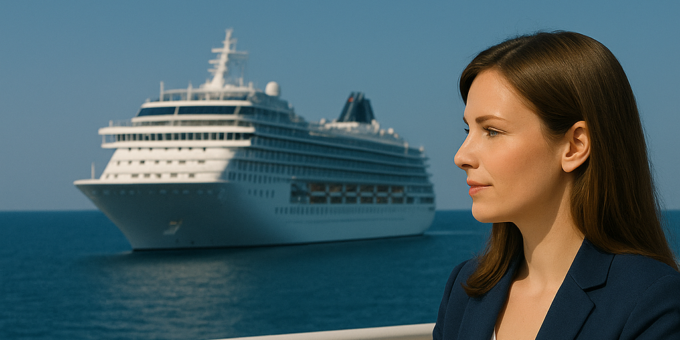
Wealth creation has always favored those who look beyond the beaten path. Amid the rush toward stocks, real estate, and tech startups, a discreet but highly profitable industry sails forward—luxury yacht and cruise liner investing. It’s not just about indulgence anymore. These floating assets are evolving into some of the most robust wealth-building tools for discerning investors. From high-net-worth individuals to institutional players, the tides are turning.
In the first 10% of this article, let’s drop anchor with our focus keyword—how to build wealth by investing in luxury yachts and cruise liners. We’ll explore why these maritime marvels are turning heads, delivering returns, and outpacing traditional expectations in luxury asset classes.
How to Build Wealth by Investing in Luxury Yachts and Cruise Liners
This isn’t your typical “buy-and-hold” play. In fact, when done right, investing in the high seas can provide diversified income, global mobility, and even tax advantages. But—there’s a catch. These are capital-intensive ventures and demand knowledge, patience, and strategy.
Overview of the Luxury Marine Asset Market
The global yacht industry is projected to exceed $15 billion by 2030, with steady CAGR growth fueled by rising billionaire counts and lifestyle shifts favoring privacy and experience over materialism. Meanwhile, cruise liners—once battered by the pandemic—are rebounding with vigor, reporting record bookings and demand for themed, boutique experiences.
The Rise of Experiential Investments
Today’s investors are no longer satisfied with assets on a spreadsheet. They want experiences—profitable ones. Luxury yachts and cruise liners offer exactly that: the rare blend of enjoyment, asset appreciation, and recurring income through charters and commercial services.
Tangible Assets with Prestige
Unlike digital stocks or intangible investments, a yacht or cruise ship is real. You can board it, sail it, host guests, or anchor in Monaco during Grand Prix weekend. The emotional satisfaction combined with tangible ownership creates a compelling dual return: financial and personal.
High-Yield Charter Opportunities
Top-tier yachts can generate up to $500,000 per week during peak charter seasons. Operating in global hotspots like the French Riviera, Miami, or the Maldives, these yachts function as floating five-star resorts. Charter management firms handle operations while you enjoy passive income.
Diversification for High-Net-Worth Portfolios
From inflation hedging to asset diversification, marine assets provide a unique hedge against market instability. They’re especially attractive for portfolios already saturated with real estate or equities.
Owning vs. Fractional Ownership
Not everyone needs to drop $30 million to get started. Fractional ownership models allow investors to co-own a luxury yacht, sharing expenses and profits. Companies like YachtLife and Simpson Marine are pioneering these models, opening the gateway for newer investors.
Yacht Funds and Syndicates
Marine investment funds pool capital from multiple investors, managing yacht acquisition, chartering, and resale. These funds mitigate risks while leveraging industry expertise. Ideal for investors wanting exposure without operational headaches.
Cruise Line Stocks and REITs
Public cruise companies like Carnival, Royal Caribbean, and Norwegian offer equity exposure with the liquidity of traditional stocks. In addition, REITs with marine holdings present more stable income for dividend-focused investors.
New vs. Pre-Owned Yachts
New yachts offer customization and cutting-edge tech but depreciate faster initially. On the other hand, pre-owned vessels provide better short-term ROI if well-maintained. Either way, due diligence is critical—marine surveyors are non-negotiable.
Where to Buy: Brokers, Auctions, or Shipyards
Brokers offer tailored yacht shopping with legal, financial, and operational support. Auctions provide steep discounts but require fast action. Custom shipyards like Feadship or Lürssen create bespoke floating palaces for elite investors.
Hidden Costs of Yacht Ownership
Yacht ownership includes maintenance (10% of the yacht’s value annually), crew salaries, insurance, mooring fees, and upgrades. Failure to budget these accurately can sink an otherwise promising investment.
Creating a Revenue-Generating Charter Business
Marketing your yacht for charter involves partnering with firms like Burgess or Fraser Yachts. With seasonal planning, luxurious outfitting, and strategic bookings, you can achieve 10–15% annual return on capital, excluding resale.
Marketing Luxury Charters
High-net-worth clientele expect perfection. A professional charter listing, high-end photography, cinematic walkthroughs, and global listing portals like YachtCharterFleet or SuperYachts.com are essential for bookings.
Managing Operational Costs and Profit Margins
From fuel to food, every charter has variable costs. The key is automation, efficient crew management, and predictive maintenance technologies that keep operational costs within budget.
Public Cruise Lines as Wealth Generators
Cruise liners are publicly traded giants with diversified income—tickets, onboard spending, excursions, and more. Some cruise companies yield dividends of 3–5%, offering stability and compounding growth.
Niche and Boutique Cruise Investments
Beyond Carnival and Royal Caribbean lie smaller luxury liners like Viking and Ponant, offering premium experiences and investor returns through boutique channels or private equity opportunities.
Green Technology in Cruise Investment
Environmental compliance is no longer optional. Investing in ships with hybrid-electric propulsion, scrubber systems, and zero-waste policies not only enhances profitability but protects from regulatory shocks.
Maintenance and Depreciation
Like luxury cars, yachts depreciate. However, consistent upgrades, branding, and smart resale timing can reduce this impact. Maintenance schedules tied to AI predictions and certified marine engineers enhance asset longevity.
Regulatory and Insurance Complexities
Maritime law is complex. You’ll navigate flag states, crew contracts, and international treaties. Partnering with marine law experts and insurers like Pantaenius protects your investment from turbulence.
Market Volatility and Global Events
Geopolitical tension, pandemics, and fuel prices influence the industry. Diversifying across yacht types, cruise lines, and geographies hedges your risk significantly.
Offshore Ownership and Tax Havens
Many investors register yachts in tax-friendly jurisdictions like Cayman Islands, Malta, or Marshall Islands. This offers legal protection, privacy, and reduced liabilities.
Maritime Law: What Investors Must Know
Understanding SOLAS, MARPOL, and ISM Code is critical. Non-compliance can result in vessel seizure or heavy fines. Retain maritime legal advisors during acquisitions.
Selling vs. Holding Long-Term
When ROI goals are met or the market peaks, selling is ideal. A well-documented maintenance history, branded charter portfolio, and professional marketing can command premium resale prices.
When and How to Liquidate Assets
Liquidating through global yacht shows or international brokers ensures maximum visibility. For cruise stockholders, quarterly performance reviews and earnings calls guide exit timing.
Billionaires Who Built Empires at Sea
Names like Roman Abramovich and Richard Branson showcase the clout and cashflow tied to marine investing. These aren’t just vanity projects—they’re strategic financial vessels.
Cruise Lines that Beat the Market
Royal Caribbean’s post-COVID surge and Viking’s niche domination prove that the right picks outperform tech and energy stocks under certain market conditions.
Eco-Yachts and Ethical Investment Trends
With ESG investing on the rise, eco-yachts powered by solar, wind, or hybrid systems fetch premium rates. Expect tax incentives and broader appeal as sustainability dominates headlines.
The Rise of Electric and Hybrid Vessels
From Silent Yachts to Sunreef Eco, innovations in propulsion technology are revolutionizing yacht ownership. These vessels offer quieter, greener, and more cost-efficient operations.
Smart Yacht Systems and AI Maintenance
IoT sensors predict repairs before breakdowns. AI manages HVAC, lighting, and navigation—reducing crew needs and operational costs while boosting value.
Blockchain and Tokenized Yacht Ownership
Platforms like SmartYacht and MonacoTech are democratizing yacht investments using tokens. This adds liquidity to an otherwise illiquid asset.
FAQs
What’s the minimum investment for a luxury yacht?
Typically, entry-level luxury yachts start at $1 million, but fractional models begin around $100,000.
Can I rent out my yacht to cover costs?
Absolutely. Luxury yacht charters can generate hundreds of thousands annually, covering maintenance and turning a profit.
How are yachts taxed?
It depends on the flag state, location, and usage. Offshore registration can offer favorable tax conditions.
Is cruise stock better than yacht ownership?
For liquidity and diversification, yes. For asset enjoyment and higher return potential, yacht ownership may outperform.
What are the risks of investing in cruise liners?
Market volatility, fuel prices, and geopolitical instability. However, strong branding and diversified fleets mitigate this.
Are eco-friendly yachts worth the premium?
Yes. Not only do they align with global sustainability goals, but they also command higher charter rates and lower running costs.
You Can Also Read : The Future of High-End Maritime Investment: Luxury Ships Explained
If you’re ready to diversify your portfolio, enjoy luxury, and generate solid income streams, it’s time to look seaward. Learning how to build wealth by investing in luxury yachts and cruise liners is more than a dream—it’s a strategy. With smart planning, expert guidance, and a passion for the open sea, your next big financial wave might just start at the dock.
